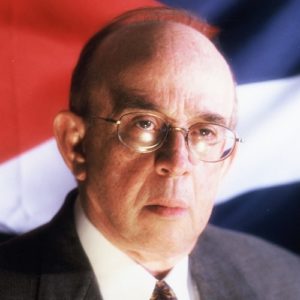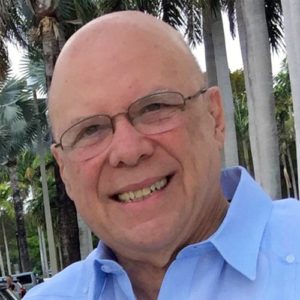During the first few years of Batista’s regime, political parties exerted considerable influence in Cuba. The Ortodoxos were particularly popular and influential because of the party’s uncompromising attitude toward Batista, the mystique of its martyred leader, Eduardo Chibás (1951), and the fact that its more prominent members included several professors at the University of Havana. The National Revolutionary Movement, an offshoot of the Ortodoxo party, also commanded strong student support. Led by a university professor, Rafael García Bárcena, this group recruited a number of students for an attack on the military camp that had given Batista command of the army. Bárcena, also a professor at the War College, a school for army officers, had maintained close contact with the military and expected his attack to coincide with a military coup. Bárcena invited Fidel Castro to participate in the attack, but Castro refused, perhaps considering it a suicidal attack, or perhaps wanting to direct his own movement. Batista’s intelligence service averted the plot and arrested Bárcena and several fellow conspirators in April 1953. They were brutally beaten by the police, tried, and sentenced to prison.
A small faction within the Ortodoxos also advocated violence as the correct tactic to combat Batista. Fidel Castro belonged to this group. After receiving his doctorate of law from the University of Havana in 1950, he joined the party and was nominated to run as an Ortodoxo candidate to the House of Representatives in the aborted 1952 election. Batista’s coup thwarted Castro’s ambitions for a parliamentary career, and he began organizing a small group of followers for his ill-fated attack on the Moncada military barracks in Oriente Province on July 26, 1953.
Although Fidel stored armaments and trained activists within the shelter of the university campus, he was able to recruit only a few students for his venture. His failure to obtain a large following among students requires some explanation. First, Batista had been in power just a short time and was promising elections and a quick return to constitutional government. His performance in 1944, when he allowed relatively honest elections, must have convinced many who would have otherwise followed a violent road to wait a bit longer before resorting to violence. At the time the population had barely recovered from the shock of the coup, the opposition was divided and powerless, and the army, purged of anti-Batista officers, was behind the regime. Violence seemed premature and ill-advised. Second, Castro was not the only one involved in conspiratorial activities within the university. Other groups more influential among the students, such as Bárcena’s, had been planning the violent overthrow of Batista’s regime. Finally, Castro was unable to count on the support of his UIR allies. The professional gunmen in this group refused to accept the leadership of a man of action of lesser stature, such as Castro was then.
Castro’s Moncada attack was set to coincide with the Santiago carnival in eastern Cuba. This carnival, held in July, is actually a three-day Afro-religious festival. Although Catholicism is Cuba’s official religion, Santería, a syncretic cult in which the Catholic saints are equated with African deities, is widely practiced, particularly among the poorer elements of the population, black and white, but also among the white upper class. In Santiago, the carnival was a time of festival honoring the African deities with continuous drinking and wild dancing in the streets to the sound of African tribal instruments.
Expecting army discipline to be low at this time, Castro and his group planned a surprise attack to capture the Moncada barracks. This would coincide with a vigorous publicity campaign projecting the movement as an Ortodoxo uprising supported by pro-Ortodoxo army officers. Castro hoped that this would cause sufficient confusion to paralyze the army and thus prevent it from reacting against the rebels. Batista would then be forced to resign and the Ortodoxos would be catapulted into power with Castro now as the party’s undisputed leader. In reality, the party was not consulted, and its leaders were informed of Castro’s plans only the day before the Moncada assault.
Castro’s attack ended in disaster. The garrison’s discipline was not relaxed, and the army fought back the attack. Some of the attackers failed even to enter the military barracks. Those who did were massacred. Castro himself escaped to the mountains, only to be captured and sentenced to years in prison. The attack had failed, yet it gave Castro and his movement national prestige. It showed, furthermore, Castro’s awareness of insurrection as psychological warfare and the importance he attributed to publicity and the mass media as tools in the struggle against Batista. Later on, while in jail, he redrafted his famous address before the tribunal that sentenced him, his brother, and other conspirators to jail. The manuscript of the pamphlet, History Will Absolve Me, was smuggled out of jail and several thousand copies were distributed throughout Cuba. The pamphlet, however, had little impact as most of the population remained unaware of its existence or considered Castro’s attack a suicidal and futile attempt against the regime.
In History Will Absolve Me, Castro outlined his political program. He associated his movement with the ideals of Martí and Chibás and called for reforms that were within the mainstream of Cuba’s political tradition. Similarly, in the Moncada manifesto that was to be read if the military barrack was captured, Castro emphasized that his revolution “is inspired on the ideas of Martí and adopts as its own the revolutionary programs of Jóven Cuba, of the Radical ABC and of the Ortodoxos.”
At no time during his struggle against Batista did Castro outline a program that departed from Cuba’s political tradition. Although the most radical elements of the revolutionary leadership thought that Cuba needed profound structural economic changes that would cure the ills of monoculture, unemployment and underemployment and dependence, most of the oppositionist leaders to Batista wanted political changes. None of these groups, including Castro or his 26th of July Movement, offered a program along Marxist lines. The great majority of the Cuban people who supported the anti-Batista struggle were hoping for a return to the Constitution of 1940, honesty in government, and an end to violence.
*Jaime Suchlicki is Director and founder of the Cuban Studies Institute, CSI, a non-profit research group in Coral Gables, FL. He is the author of Cuba: From Columbus to Castro & Beyond, now in its 5th edition; Mexico: From Montezuma to the Rise of the PAN, 2nd edition, and Breve Historia de Cuba. He is a highly regarded consultant to the public and private sectors.








